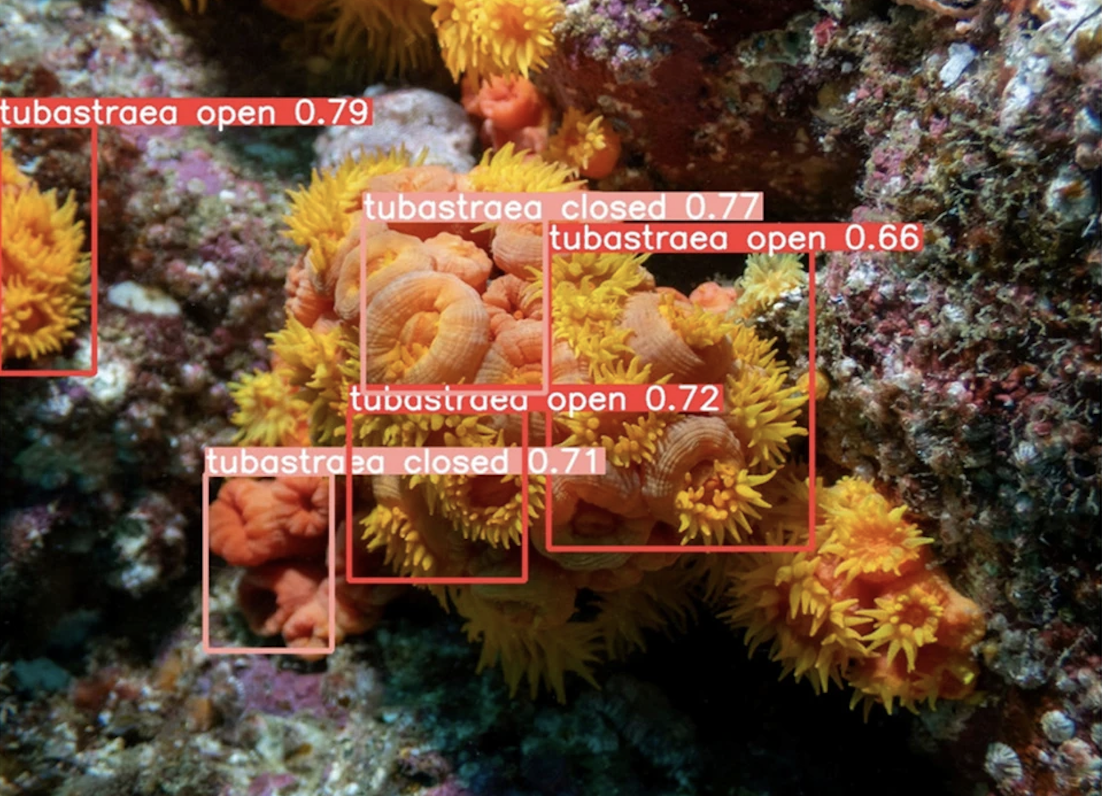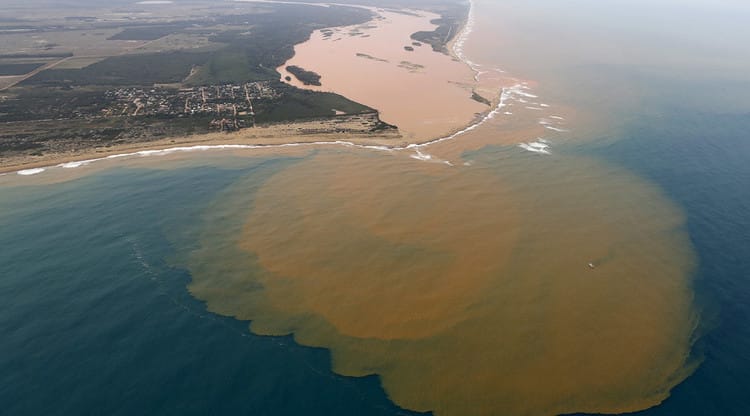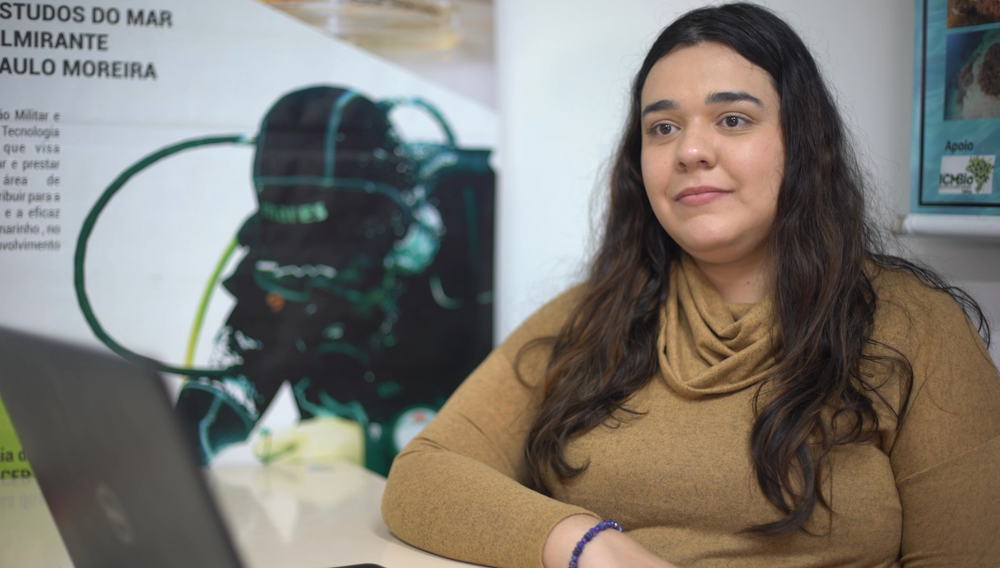#04 Application that uses AI to identify sun coral still has limitations
As a final result, modeling using machine learning represents an advance in controlling the invasive species, but it will have to overcome implementation challenges.

The Main Fact
Researcher Ana Carolina Luz developed software that combines AI (artificial intelligence) with computer vision to detect the presence of sun coral, one of the main invasive species along the Brazilian coast. However, the implementation and dissemination of the technology still face obstacles.
“AI may not solve everything on its own, but it helps minimize environmental impacts. Alongside other strategies, it can buy ecosystems time to resist,” said Ana Carolina Luz in an interview with Correio Sabiá.
Main obstacles to disseminating the solution
Despite being promising, the solution that combines computer vision and machine learning faces challenges to overcome.
- First, the model needs further testing, even though the initial stage has shown positive results.
- Second, implementing large-scale modeling requires more underwater vehicles, as well as the installation of monitoring cameras. Therefore, this advancement involves inherent costs.
Strengths of the solution
On the other hand, the automation of monitoring brings positive and promising progress.
- If, on one hand, implementing machine learning modeling requires camera installation, on the other hand, it reduces costs related to deploying diving teams, for instance.
- Furthermore, once adjusted, the model makes it possible to scale up the monitoring of exotic species, aiding both the identification of sun coral and other invasive species.
“This model can be replicated for many other invasive species. It’s a first step toward integrating technology into conservation,” said Ana Carolina Luz.
Why does it matter?
Moreover, speaking specifically about sun coral, the species is resilient to variations in temperature and salinity and has a strong reproductive capacity. For this reason, it has become one of the major invaders of the Brazilian coast.
“When it releases larvae, they settle very quickly. There are studies here about that, too, about this settling process. Sun coral usually dominates that environment. It kind of monopolizes a rocky shore,” explained Ana Carolina Luz.
Environmental protection areas and the 30x30 goals
Although it has spread across thousands of kilometers of the Brazilian coast since it was first recorded in the 1980s in the Campos Basin, the sun coral has not yet reached some important Brazilian environmental protection areas, such as the Abrolhos marine sanctuary.
In all these cases, monitoring is an essential tool for science to determine whether the “invasion” is under control, or how it has been affecting the environment and interspecies competition.
“As can be seen in the field, the sun coral is usually spread across the coral; it doesn’t stay isolated. So there’s a need for early detection of this species because its reproductive capacity is excellent—and that becomes a threat in the context of a protected area where we must have a management plan. We need to preserve local biodiversity. Here in Arraial do Cabo, for instance, we face this issue. There are many sun coral colonies, and we have an extractive reserve—a sustainable conservation unit. (...) Sun coral ends up representing one of the main biodiversity threats to the Resex [extractive reserve]”, stated the biologist.
She added:
“The reserve also has a tourism side, and when we visit these diving areas, we often end up finding invasive species instead of native species from our Brazilian coast.”
Part of Ana Carolina Luz’s research was conducted at IEAPM (Admiral Paulo Moreira Institute for Sea Studies) of the Brazilian Navy, which maintains sun coral colonies in experimental tanks. The goal is to understand the organism’s biology and search for mitigation strategies.
“We work with applied research. We monitor sun coral in a controlled environment and aim to develop protocols to mitigate its impacts,” said Navy biologist and corvette captain Sávio Calazans.
Interviewed by the report, professor and researcher Carlos Eduardo Leite Ferreira, known as “Cadu,” stated that eradicating sun coral is “practically impossible” and that management strategies are the viable solution.
“These species tend to stabilize over time. But eradication is practically impossible. We need to think in terms of management strategies.”
Need to include computer vision in legal frameworks
Sun coral is already legally recognized as a threat to the biomes where it occurs and is subject to specific public policies for its management, as Ana Carolina Luz herself mentioned:
“We have some laws that address a management and control plan for sun coral. (...) There’s a dedicated legal framework—a management, control, and monitoring plan specifically for the species; an ordinance by Ibama. This plan is already well known among researchers working with sun coral.”
However, according to her, there is room to update current regulations to explicitly include the possibility of monitoring and management through new technologies such as artificial intelligence, machine learning, and computer vision.
“What I particularly find lacking—what I think the model and this study can contribute—is the use of artificial intelligence. So today, within the context of these plans, the types of monitoring used involve divers, of course, instrumentation with cameras, and visual inspection, which is a very common practice among biologists—in short, marine biology scientists. All of that is contemplated within these plans. But the use of artificial intelligence is still largely unexplored,” said the researcher.
“So, if I could make a suggestion, it would be to include technologies like this one—computer vision—for detecting these organisms,” she added.
The execution of this monitoring would take place through cameras that could be attached to underwater vehicles or fixed to platforms, connected to a computer or another external hardware device that performs identification quickly and efficiently.
“From what I’ve seen in our relevant legislation, this is still not included,” said Ana Carolina Luz.
Support from Earth Journalism Network
The series of reports “Sun Coral, an Invasive Species on the Brazilian Coast” is a production by Correio Sabiá and Ocean with support from the Earth Journalism Network.
That is because the founder of Correio Sabiá and Ocean, journalist Maurício Ferro, was one of 16 people selected in a global call by the Earth Journalism Network, being the only Brazilian among the group.
In the coming days, readers will find information about this invasive species in bilingual versions (Portuguese and English). There will also be an audiovisual production to be published on Correio Sabiá’s YouTube channel.
Autor

Jornalista e empreendedor. Criador/CEO do Correio Sabiá. Emerging Media Leader (2020) pelo ICFJ. Cobriu a Presidência da República.
Inscreva-se nas newsletters do Correio Sabiá.
Mantenha-se atualizado com nossa coleção selecionada das principais matérias.



